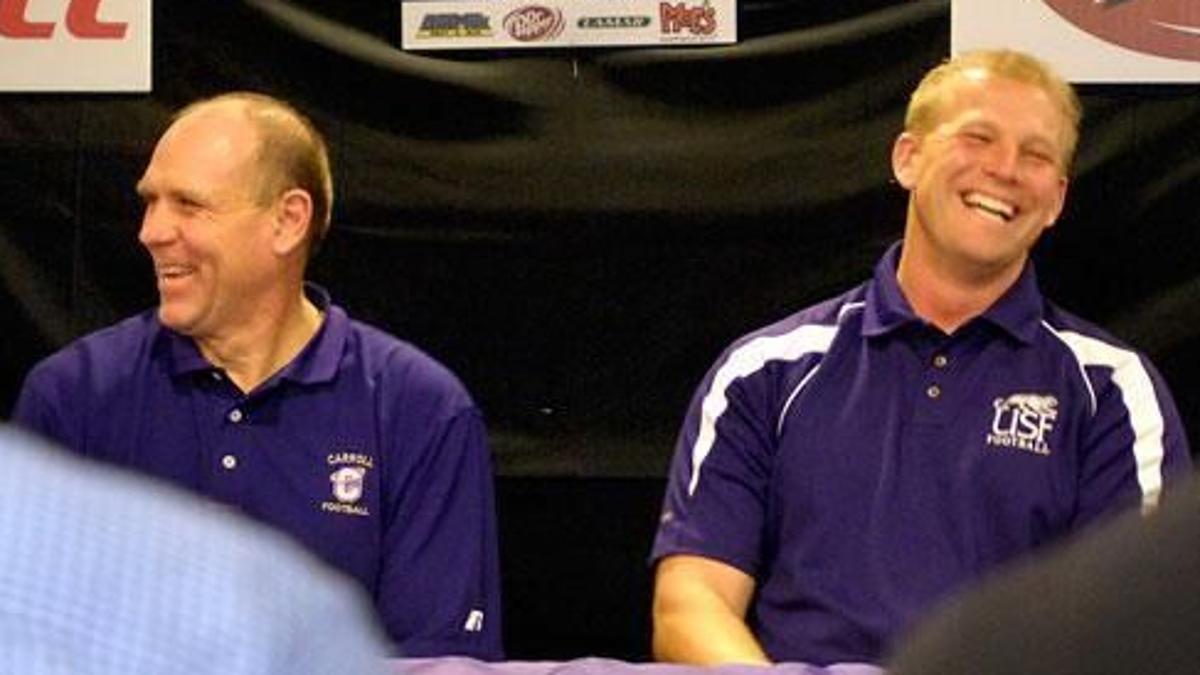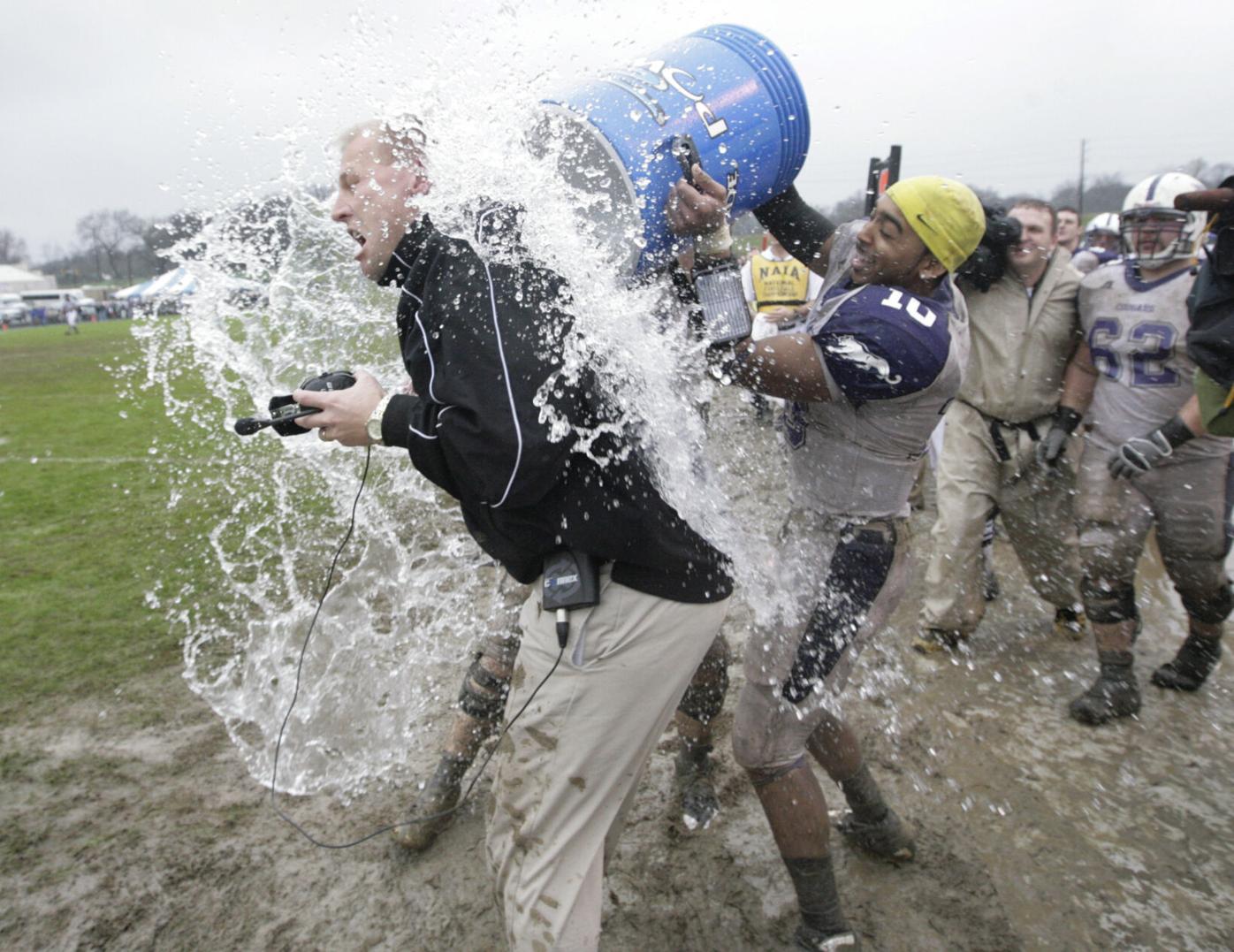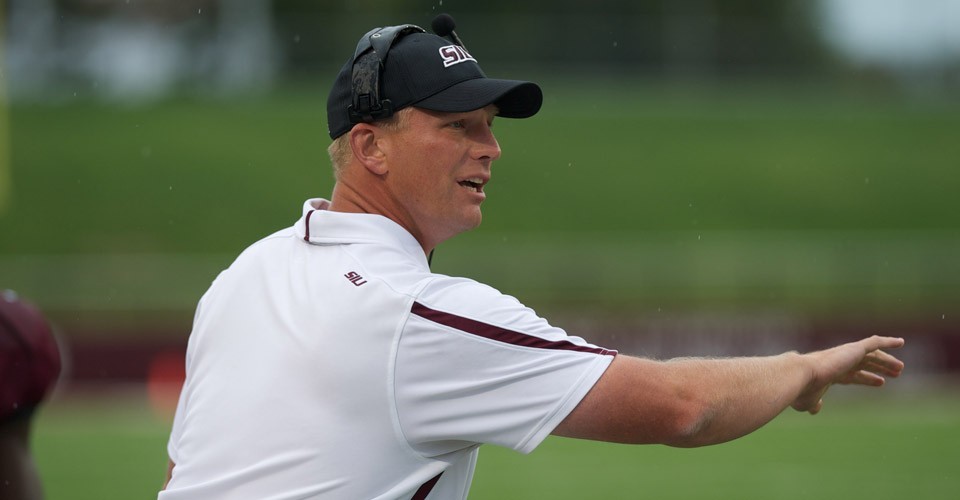The Innovator: Kalen DeBoer Poised to Bring New Culture, Explosiveness to Tuscaloosa
In the ever-changing realm of college football, new Alabama football head coach Kalen DeBoer's name resonates as a visionary figure at the forefront of offensive innovation.
At the University of Washington, DeBoer's utilization of a spread offense, infused with west coast and air-raid influences, captivated the sport and caught the attention of football aficionados, analysts, and coaching circles nationwide. Slowly climbing up the collegiate food chain, DeBoer has honed his craft meticulously over time, developing a system that not only challenges traditional approaches but also breeds success — a success that traces its roots to his transformational years at the University of Sioux Falls, where the 49-year-old clinched three Division II national championships from 2005–2009.
With its dynamic, wide-ranging strategies and electric pace, the spread offense has become a buzzword synonymous with excitement. As DeBoer embarks on a new chapter in Tuscaloosa, there's a palpable sense of anticipation surrounding how his imaginative approach will infuse life into a program searching for a new identity.
The Scheme
DeBoer, like many coaches implementing a spread-style offense, uses multiple wide receiver sets to spread the field horizontally, with an emphasis on creating mismatches with athletic and skilled wide receivers, tight ends, and running backs.
DeBoer's offense emphasizes a fast-paced, up-tempo approach with the intent of stretching the defense and creating opportunities for both the running and passing games. The spread offense has evolved over the years and can take on various forms, but there are a few key principles and characteristics that separate DeBoer from the status quo — incorporating a blend of sophisticated route combinations, adaptable formations, and strategic play-calling that set him apart in the progressive landscape of college football.
In dissecting DeBoer's offensive prowess, we discover a playbook that not only embraces the core tenets of the spread offense, but also introduces a level of ingenuity that keeps opposing defenses guessing.
- Spread Formation: The offense lines up with multiple receivers spread out wide, using a shotgun or pistol formation with the quarterback positioned a few yards behind the center. While it's a relatively basic concept, it's DeBoer's go-to alignment. The spread offense typically features a higher number of wide receivers on the field, with some variations using three, four, or even five wideouts. This puts more speed and skill on the field to create mismatches. As an example, here we see Washington quarterback Michael Penix Jr. in a five-wide set.

- RPOs (Run-Pass Options): With an RPO, the quarterback has the flexibility to either hand off the ball to a running back or pass it to a receiver based on the defensive reaction. Before the snap, the quarterback evaluates the defensive alignment, focusing on specific key defenders. These defenders, often linebackers or defensive ends, are critical to the decision-making process during the play, with the mesh point's deliberate design making it a challenge for the defense to read the play's intention. It's a play design that DeBoer first heavily implemented while serving as Indiana's offensive coordinator in 2019. Having Jalen Milroe at his disposal, DeBoer is likely to deploy a variety of RPO sets strategically designed to create opportunities for the second team All-SEC quarterback and free up Alabama's skill positions. The spread offense's use of RPOs can also set the stage for effective play-action. Here we see Penix Jr. on a pin-and-pull RPO that results in a touchdown to Jalen McMillan.
- Play Action: Within DeBoer's spread offense, play action is strategically designed to capitalize on the spread's tendency to stretch out the defense horizontally. By utilizing play-action passes, DeBoer aims to freeze or manipulate opposing defenders, creating opportunities for big gains through the air. The spread offense, with its wide receiver alignments, can create vacated areas in the intermediate and deep parts of the field when defenders are drawn towards the line of scrimmage due to play action. At Washington, DeBoer's wide receivers typically ran deeper routes off of play action, hoping to take advantage of the space created by the Huskies' rushing attack, Penix Jr. and his trio of dynamic wideouts in McMillan, Rome Odunze, and Ja'Lynn Polk. In this play, we see Penix Jr. connect with Odunze, who ran a streak disguised as a ten-step square out route based out of play action.
- Crossing Routes: Crossing routes, also known as crossers or drag routes, are a recurring theme in DeBoer's offense that involve receivers running horizontally or diagonally across the field. In a crossing route, the receiver starts on one side of the field and runs at an angle towards the opposite side. The angle can vary based on the specific play design and the receiver's initial alignment. Crossing routes are often integrated with other routes. The "mesh" concept, for example, involves two crossing routes intersecting, creating a natural rub or pick that can confuse defenders and create openings for the receivers. Here we see Penix Jr. find Odunze for the wide-open completion as the rub pattern pulls the inside linebacker out of the play while the safety vacates the area.
- Vertical Stretches: A key concept in DeBoer's offense, these plays involve stretching the defense vertically down the field, exploiting the depth of the defensive coverage. Vertical stretches involve the use of multiple receivers running routes that attack different levels of the defense simultaneously, with your most common concepts being go routes, post routes, fade routes, corner routes, and deep crossers. With deep threats at the wide receiver position, DeBoer's offense aims to force defenses to respect their ability to stretch the field. This, in turn, can open up underneath routes and the running game. In this play, we see Penix Jr. fire a strike to Odunze on a fade route designed to exploit a one-on-one opportunity.
- Running Game: While DeBoer's offense is known for its emphasis on spreading the field with multiple receivers, the running game remains a critical element for maintaining balance, controlling the clock, and exploiting defensive vulnerabilities. Spread offenses like DeBoer's often utilize both inside and outside zone running plays. Inside zone runs involve the running back aiming for gaps between offensive linemen, while outside zone runs focus on stretching the defense horizontally before making a cut. Designed quarterback draws and zone reads are also commonplace in DeBoer's offense, capitalizing on the mobility and decision-making skills of a quick-twitched dual-threat quarterback. The jet sweep is also a popular DeBoer staple, as it can spread the field horizontally to create space for playmakers. Here we see DeBoer sending McMillan in motion across the screen to emulate a jet sweep, pulling the strong-side linebacker into the slot, allowing for Wayne Taulapapa to scamper in for the touchdown courtesy of an inside zone rush concept.
The Coach
The role of a coach extends beyond the Xs and Os of the game; it encompasses leadership, communication, and the ability to manage and motivate players. A coach who lacks relatability or struggles with player management would quickly find that these inadequacies not only affect the team's performance on the field, but also the overall team dynamics and success, especially in the shadow of Nick Saban's world-class proficiency in both areas.
Culture matters. Kalen DeBoer constructs it effortlessly.
For Mike Van Diest, the only head coach to defeat DeBoer twice at the Division-II level and six-time NAIA national champion at Carroll College, it's DeBoer's interpersonal skills that stand out, fostering mutual respect and admiration even in the heat of competition.
"I've always admired him," Van Diest said. "Just how he handled himself when he became a head coach and anytime we played against him when he was a head coach. He just had a lot of class. I just liked his demeanor. I got to know him personally more at the American Football Coaches Association conventions every year, and we'd sit and talk because of our rivalry in the playoffs. I think we just had respect for both our programs. I like talking football with him. I just felt comfortable around him."

An effective quarterback must recognize areas of their game that require refinement without any form of sugarcoating. Lorenzo Brown Jr., who served as DeBoer's starting quarterback during the Cougars' 2008 national championship season at Sioux Falls, was particularly impressed by DeBoer's capacity to offer candid and constructive feedback.
"From day one, when I met him, even when I talked to him on the phone before I met him in person, he was real," Brown Jr. said. "You can just tell that he's just himself. He's as real as it gets. He's not one of those people that blow smoke and just tell you what you want to hear. And he's just really just personable and easy to talk to you, like that father figure that we all had on the team."
The spread offense is often celebrated for bringing a sense of excitement and liberation to the game, as players have the opportunity to showcase their versatility and creativity. From Brown Jr.'s perspective, the freeing nature of DeBoer's offense is a crucial element of play that significantly contributes to his immediate success on the field.
"We'd find the matchups really," Brown Jr. said. "We used to get the players that can make plays for us matched up against players that really can't cover or get different looks that we'd want to have that we can capitalize on, find the holes in the zones and just let our playmakers go to work. That was my job. Making stuff happen and getting the ball out of my hands. And you know, when sometimes when it didn't happen, or when they're covered up, Coach DeBoer would just tell me 'do me' and make something happen. We had some freedom. It was fun. It was really fun."

For Brown Jr., DeBoer's innovative mindset also underscores a coaching philosophy that not only embraces change and evolution in the game but showcases a winning formula that has propelled him to remarkable heights in his coaching career.
"Things evolve and things change but he's definitely revolutionizing the game," Brown Jr. said. "He's adding a little flavor on it and thinking of ways to take advantage of what the defense is doing week in and week out. The proof is in the record he has, I mean, more times not he's winning games and and putting up a lot of points. He wouldn't be where he's at if he wasn't, you know, doing things right. Everywhere he goes, he's surrounded by winning. It's just the culture that he brings, the competence that he brings, and the staff that he surrounds himself with. It's no surprise what he's doing. I'm just really proud and happy to see him take advantage of the opportunities given. This is nothing new to him."
The journey of a coach often involves a significant aspect of humility and the willingness to lower oneself before ascending the ranks. In Van Diest's view, DeBoer's openness to taking on lesser roles has been instrumental in advancing his coaching career and securing more favorable job opportunities.
"He's got some pretty good people that's going to go out there," Van Diest said. "And the brand name itself, Alabama, is still going to hold a lot of cork. It's great to see Kalen, as an NAIA coach, and seeing the path that he's taken, being an assistant after being a head coach [...] some guys, you know, once they're the head coach, they never want to relinquish that control in their lives. And Kalen was willing to do that, to be an assistant coach and work his way up the ladder at the FBS level. It's refreshing."

For Van Diest, there's some additional pride to be had in DeBoer's success — expressing delight in his accomplishments and demonstrating a playful desire to have been a bit younger, envisioning a potential contribution to DeBoer's latest opportunity in Tuscaloosa.
"I just want to wish him best of luck," Van Diest said. "I'd love to tell him how proud I am, and how great it is because again, it's great to see coaches, no matter what level, whether you're coming from, Division-II, Division-III, NCAA [...] football coaches that work hard and put the time in and build great relationships with their players and other coaches like Kalen and his staff have done in all their previous jobs. I think it's great. I just want to wish him the best of luck. I've been an Alabama fan, you know? I wish I was 10-15 years younger. I probably would've put in my resume to say 'hey, got a spot for an analyst or senior advisor for me?' but, you know, he's going to do so well."
See More:
